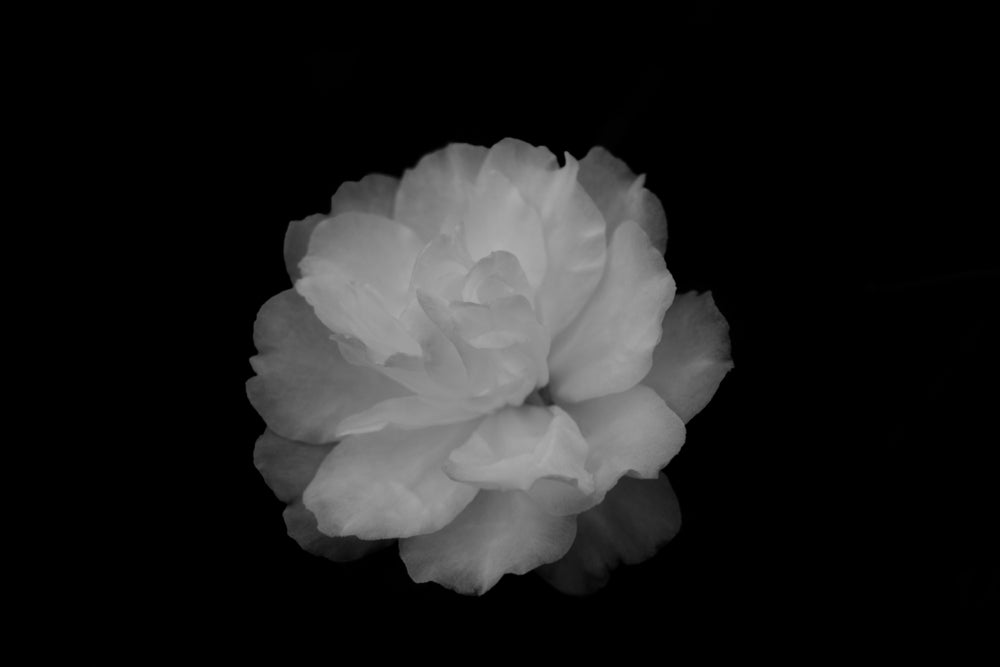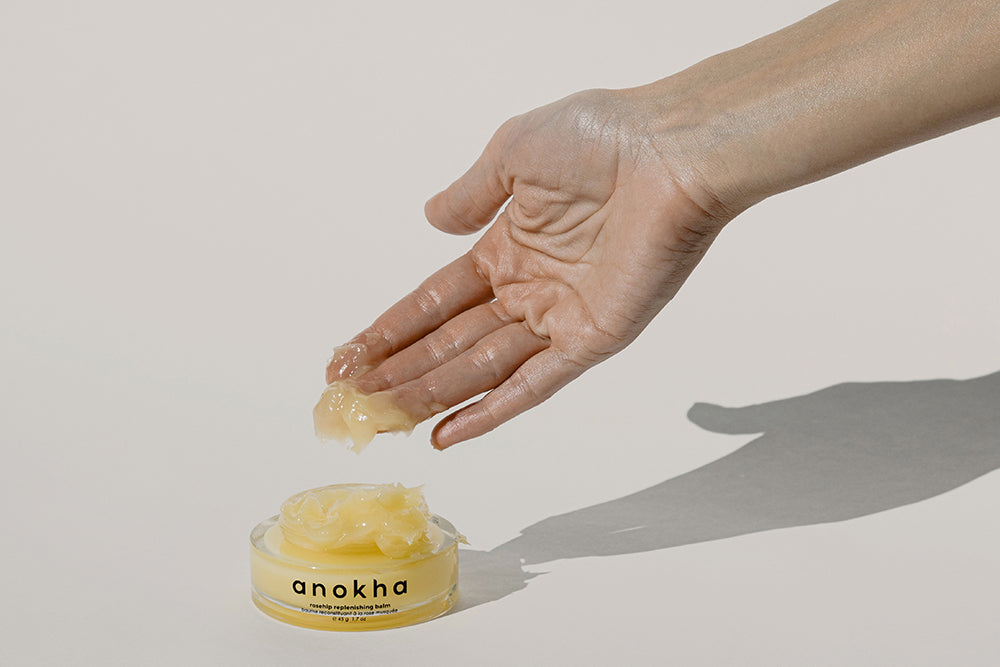
ingredient focus: yarrow

the bottom line
While you may not be familiar with the beneficial properties of this demure plant, yarrow has a long and complex history as a medicinal herb. Boasting a penetrating fresh and herbaceous odor, it’s closely related to chamomile and is particularly useful for allergies, stress-related conditions, inflammation, and insomnia. Read on to discover the variety of yarrow’s benefits.
first layer: the history
Native to the temperate regions of the Northern Hemisphere in Asia, Europe, and North America, yarrow (Achillea millefolium) takes its name from the mythical Greek hero Achilles, who is said to have carried the herb with him to heal wounds sustained in battle during the Trojan war (it’s also said he used it on his own heel, but that seems to have not worked out so well). Traditional names for yarrow have included such creative monikers as bloodwort, death flower, devil's nettle, eerie, knight's millefoil, noble yarrow, nosebleed, old man's mustard, sanguinary, seven year's love, snake's grass, soldier's woundwort, and (our personal favorite) bad man's plaything.
second layer: the science of yarrow
The Achillea species are rich in various metabolites, including flavonoids*, phenolic acids*, terpenes*, phytosterols*, organic acids, fatty acids, and alcohols. Flavonoids and phenolic acids are responsible for the significant antioxidant* properties of yarrow, while phytosterols contribute to its anti-inflammatory effects. One in vivo*, double-blinded, randomized trial showed significant skin calming following use of an Achillea millefolium macerate at 3 and 7 days after skin injury.
Yarrow has also been shown to increase the proliferation of fibroblasts*, cells involved in the formation of connective tissue within the body. Fibroblasts secrete collagen proteins which help to maintain the structural framework of the tissues. Yarrow also demonstrates marked antimicrobial activity against the bacteria S. aureus and P. aeruginosa.
Achillea millefolium has shown marked anti-tyrosinase activity in vitro* with suppression of melanin production. Tyrosinase is a major enzyme involved in melanogenesis*, catalyzing the initial two rate-limiting reactions in the synthesis of melanin*.
And finally, who could overlook that hauntingly gorgeous shade of blue? When yarrow is distilled under heat and pressure, one of its essential oil components decomposes into chamazulene, remarkable for its vivid blue color.
third layer: yarrow in skincare
Yarrow has a number of applications in modern skincare:
- skin brightening: with its anti-tyrosinase activity, yarrow is capable of suppressing melanin production and contributing to skin brightening.
- wound healing: yarrow promotes wound healing by increasing the proliferation of fibroblasts and stimulating wound closure to help reduce scars.
- anti-aging: skin rejuvenation is effected by the organization of the dermal matrix and epidermal structure. Human epidermis treated with extracts of Achillea millefolium has been shown to result in a 10% increase in epidermal thickness. Another study in which skin was treated with a 2% extract showed a significant improvement in the appearance of wrinkles and pores.
- aromatherapy: yarrow has a sweet, fresh, and herbaceous odor which contributes to its relaxing effect.
fourth layer: how we do it
Our blue lotus body oil is a silky body oil with a blend of dry and essential oils for soft skin and a sensual start to the day. Combining squalane, papaya, kukui nut, and blue yarrow and yuzu essential oils, it helps to soothe irritated skin and revive the sense with its sparkling, earthy fragrance.
It's total skin renewal, every morning.
All this and more at www.anokhaskincare.com .
xx
anokha
references:
1. https://en.wikipedia.org/wiki/Achillea_millefolium
3. https://www.edenbotanicals.com/
4. Tadic V, Arsic I, Zvezdanovic D, et al. The estimation of the traditionally used yarrow (Achillea millefolium L. Asteraceae) oil extracts with anti-inflammatory potential in topical applications. J Ethnopharmacol 2017; 199: 138-148.
5. Ghobadian Z, Ahmadi MRH, Rezazadeh E, et al. In vitro evaluation of Achillea millefolium on the production and stimulation of human skin fibroblast cells (HFS-PI-16). Med Arch 2015; 69(4): 212-217.
6. Pain S. Altobelli A, Boher A, et all. Surface rejuvenating effect of Achillea millefolium extract. Int J Cos Sci 2011; 33(6): 535-542.
7. Zengin G, Aktumsek A, Ceylen R, et al. Shedding light on the biological and chemical fingerprints of three Achillea species (A. biebersteinii, A. millefolium and A. teretifolia). Food & Function 2017; 8(3): 1152-1163.
8. Strzepek-Gomolka M, Gawel-Beben K, Kukula-Koch W. Achillea species as sources of active phytochemicals for dermatological and cosmetic applications. Oxid Med Cell Longev 2021; 6643827: 1-14.
9. Czech K, Gawel-Beben K, Szopa A, et al. Phytochemical profiling, antioxidant, and tyrosinase regulatory activities of extracts from herb, leaf and in vitro culture of Achillea millefolium (yarrow). Molecules 2023; 28: 4791-4806.
definitions:
antioxidant: an antioxidant is a compound that inhibits oxidation. free radicals create oxidative stress and an inflammatory response which in turn can damage DNA and result in injury to the epidermal and dermal layers of the skin. in the skin, this manifests as premature aging with decreased elasticity leading to increased wrinkling, age spots, and decreased skin tone. antioxidants stabilize free radicals, which in turn limits their ability to damage the body.
fibroblast: a fibroblast is a cell that contributes to the formation of connective tissue within the body. fibroblasts secrete collagen proteins which help to maintain the structural framework of the tissues.
flavonoids: flavonoids are a diverse group of plant chemicals, or phytonutrients, found in almost all fruits and vegetables. like carotenoids, they help to give fruits and vegetables their vivid hues. flavonoids are powerful antioxidants that fight inflammation and help to support the immune system.
in vitro: a study performed in the laboratory
in vivo: a study performed on live subjects
melanin: melanin is a dark brown to black pigment occurring in the hair, skin, and iris of the eye. it's responsible for tanning of skin.
melanogenesis: the process for the production of melanin, the primary source of pigmentation in the skin.
phenolic acids: phenolic acids are a key class of polyphenols which are natural antioxidants.
phytosterols: plant-derived compounds that are structurally related to cholesterol



leave us a comment
This site is protected by hCaptcha and the hCaptcha Privacy Policy and Terms of Service apply.